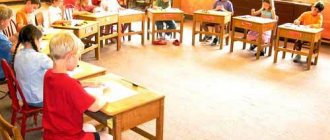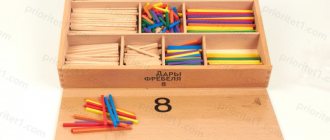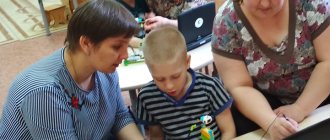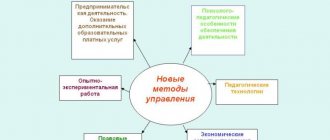When a child is born into a family, parents try to ensure its timely development: intellectual, speech, emotional. In this case, the situation in the family, the attention that parents pay to raising their child, as well as their ability to properly organize developmental play work with the baby will be of great importance. Finger gymnastics plays an important role in all this. What is it, what is its benefit for children? At what age is it effective? This is worth looking into in more detail.
Finger gymnastics and its meaning for a child
Research has proven that the development of a child’s speech directly depends on the development of manual motor skills. At a high level, logic, coherent speech, memory and attention are well developed. Moreover, if, upon reaching four years of age, a child cannot bring water to his face in his joined palms, then his manual fine motor skills are lagging behind in development. That’s when parents turn to finger gymnastics for help for their kids.
Finger gymnastics
Methods and goals of finger gymnastics in kindergarten
At the preschool educational institution, classes are conducted on music, physical education, and even walks. The work plan of a general education institution highlights the following goals:
- Development of finger dexterity, imagination and attention.
- Activation of speech centers.
- Creating a positive attitude in the group.
Note! Finger gymnastics in kindergarten is based on the method of influencing the child’s internal organs with the hands.
For example:
- The thumb point is responsible for the functioning of the brain;
- The index finger is responsible for the functioning of the stomach;
- The middle finger controls the integrity of the spine and intestinal tract;
- The liver is associated with the ring finger;
- Heart with little finger.
Additional attraction of the child's attention
Exercise “Magic Ball” for warming up your hands
Let’s get acquainted with the “Su-jok” method, which is used by specialists in correctional work.
Sujok therapy came to us from Eastern medicine.
“Su-jok” balls are small, spiky, massage balls with two rings inside.
The balls are used to stimulate areas on the palms, and massage rings are placed on the fingers and rolled up and down.
With the help of such a massager the following occurs:
- Development of phonemic hearing and perception.
- Pronunciation correction.
- Development of sound and syllabic analysis of words.
- Activation of the dictionary.
- Development of general and fine motor skills.
- Development of mental processes.
- Development of color perception.
- Development of space-time concepts.
Can you imagine how much benefit there is from such a small “magic ball” at a very reasonable price!
Be sure to try it at home, and so that the massage process does not seem boring to children, poetic material is used:
What do we like to do in winter? Play snowballs, go skiing! Skate on the ice and race down the mountain on a sled!
Types of exercises for hands and fingers
As a result of playing games for the hands, their muscles are strengthened, the child learns to control the tension and relaxation of the limb. A prerequisite is to show adults the exercise, even if it is familiar to a preschooler.
One such exercise is gates. The palms are directed with the fingers towards each other, placed on the edge. The fingers are tense and straightened. To the command: “The gate is opening,” the palms turn parallel, with the fingers pointing away from you. On the command: “The gate is closing,” the hands return to their original position.
Using the “Let's pet the animal” exercise, you can not only relax your hands, but also bring your child into a dialogue about the pet he has or would like to have - which will also contribute to the development of imagination, thinking and speech. The task itself is simple - first with one hand, then with the second, the child “pets” an imaginary animal.
Important! Conducting finger exercises can begin from infancy - with the mother stroking and massaging the baby’s hands. However, the child will consciously complete tasks no earlier than 4 years old. As a result of this exercise, stiffness in the movements of the fingers and hands will disappear, flexibility and mobility will appear.
Gymnastics for fingers for children. Examples:
- Glasses. The thumbs and index fingers are connected to each other. The resulting “glasses” are brought to the eyes.
- Steamboat. Both palms are placed on the edge and connected, little finger to little finger, forming a ladle. The thumbs are protruded and directed upward.
- Chair and table. Chair - one palm is straightened, and the second is in a fist. The one in the fist is placed at the bottom of the straightened palm, forming a chair. The table is made according to a similar principle, only the straightened palm is placed horizontally on the fist.
Carrying out finger gymnastics in the senior group
Preparing and conducting finger gymnastics classes at a preschool educational institution
To perform finger and hand gymnastics for children, no special materials are required.
Open mathematical classes in older groups in the form of games
Note! The specialist selects exercises based on the age and development level of the group.
Children of the nursery group aged 2-3 years play “animals”, imitating the flapping of the wings of birds or the habits of familiar animals (dog, cat, bear, cockerel, cow). In this case, the teacher first shows the exercises individually, correcting and correcting each one. When this stage is passed, all the studied material is repeated in subgroups.
At the age of 3-4 years, the study of movements that strengthen the hands begins. To do this, tasks are given to depict familiar objects, such as a castle, a hammer, a flower.
4-5 year old children (pupils of the middle group) study both static and dynamic exercises. Gymnastics for fingers in kindergarten is carried out following the example of the teacher, and then the image begins to be modified (the gate opened - the gate closed).
At 5-6 years old (older group), the teacher no longer shows movements, children learn to perceive tasks by ear and reproduce them.
Note! By the sixth year of life, children are happy to organize impromptu “classes” for younger children, based on the exercises they have learned.
By the age of 6-7 years, classes take on the format of an imagination game. Taking an already familiar position, the child must tell the story associated with it, and also modify the position of his hands during his speech. At the age of six, a child, possessing a remarkable imagination, is able not only to retell a story familiar to him, but also to build his own, relying on visual material.
Approximate time plan for finger gymnastics in different age groups
Following the rules of the Federal State Educational Standard, the timing of finger gymnastics in groups of different ages is different. Class time is counted including warm-up and cool-down:
- 5 minutes - for younger preschoolers (2-4 years). In this case: 1 minute for warming up, 2 - for learning a new game, 1 - for repeating the old one, 1 - for massage with special balls.
- 7-9 minutes - for older preschoolers (5-7 years old). In this case: 1 minute for warming up, 1 - for performing static exercises, 2 - for conducting 2 dynamic games, united by a common theme, from 3 to 5 minutes for performing “finger theater”.
Characteristics of finger games in preschool education
The article defines the concept of “finger games” and discusses approaches to the classification and meaning of finger games in preschool childhood.
Key words: game, finger games, finger exercises, fine motor skills.
Play is the leading activity of a child. During play, the child receives comprehensive development: he gains new knowledge, experience communicating with others, relaxes and has fun, and masters skills. Mental processes also develop - thinking, memory, imagination, speech and others.
Despite the fact that “finger games” were known to many peoples in ancient times, it was only at the end of the 19th century in France that they were included in the preschool curriculum as a method of child development. Friedrich Froebel suggested that there is a relationship between reciting specially memorized stories and repetitive movements. In particular, a beneficial effect on the development of thinking, memory, and self-knowledge of the child was indicated.
In folk pedagogy, these games were often used in conjunction with other small genres of folklore (nursery rhymes, jokes, teasers, etc.). So, for example, everyone knows and loves from childhood such finger games as “The Horned Goat is Coming,” “Ladushki-Ladushki” and “The White-sided Magpie Cooked Porridge,” but this is not a complete list of those games that can and should be used in working with children.
G.V. Plekhanov argued that the game is social in its content, since children reflect in the game what they see around them. Finger games also reflect the reality of the environment - objects, animals, people, their activities, natural phenomena. Play is social in the way it is played. Play activity, as proven by A.V. Zaporozhets, V.V. Davydov, N.Ya. Mikhailenko, is not invented by the child, but is given to him by an adult who teaches the child to play and introduces him to established methods of play actions. Finger games are also social in their methods of implementation, since during the game children repeat the movements of adults.
Finger games are the staging of any rhymed stories or fairy tales using the fingers. Many games require the participation of both hands, which allows children to navigate the concepts of “right”, “left”, “up”, “down”, etc. [1].
Finger games are exercises to improve finger mobility, develop their strength and flexibility and, as a result, improve handwriting; reduction of physical fatigue and moral stress during classes; massage of “active points” on the fingers and palms. It includes exercises for composing all numbers, as well as letters of the Russian alphabet, using fingers and educational objects (pencils, pens, rulers). When learning to read and write, these exercises will help the child not only make his fingers more mobile, but also remember how to write this or that letter and number.
For children from 3 years old, games can be organized that are played with two hands, for example, one hand represents a nest, and the other – a bird landing in the nest. At the age of 4 years, several events are used, replacing each other. In older groups, games can be decorated with a variety of props - small objects, houses, balls, cubes, etc.
Thus, during the game, children stretch their fingers and hands and conduct a kind of finger training. Finger training includes exercises: static (maintaining a certain position given to the fingers), dynamic (developing finger mobility, switching from one position to another), relaxing (normalizing muscle tone), etc. Changing exercises helps to strain, tone, and relax still fragile and inept hands child, gradually forming his motor skills.
A modern researcher in the development of sensory perception in preschool children not only reveals the essence of finger games, but also their main difference from finger exercises, which consists in the accompanying recitative material. Many specialists, especially practical researchers and methodologists working directly in this direction, are inclined to the same conclusion. I. E. Svetlova reveals the importance of finger games as a means of developing fine motor skills in children of primary preschool age, which is that [2]:
develops finger dexterity, the ability to coordinate and coordinate the movements of hands and fingers;
- the child’s oral speech is formed and developed;
creative skills and imagination develop;
basic cultural and hygienic skills are easily instilled;
concentrates attention on a certain type of activity, which contributes to the development of perseverance;
- the emotional sphere of the child is corrected.
The effectiveness of using finger games in the development of fine motor skills is also emphasized in the study of L. I. Tishchenko, who notes that simple movements, such as finger bends, clamps, unclenches, etc., help to reduce tension in the hands and promote relaxation of the muscles of the whole body [3] . Some finger games prepare the baby for counting, while in others the child must act using both hands, which helps to better understand the concepts of above and below, above and below, right and left.
A wide range of finger games provides great opportunities in their choice. Researchers have proposed various methods of classification; we will present the most capacious and at the same time compact, in our opinion. So I.V. Dvorova, O.P. Rozhkov classify finger games as follows [4]:
- finger games without speech accompaniment;
- finger games with speech accompaniment;
- folk finger games;
puppet theaters: finger, mitten, glove, shadow theater;
exercises with fingers using a variety of materials: waste, natural, household materials.
In the pedagogical literature, different types of finger games are distinguished, depending on their purpose (purpose).
- Manipulation games: “Okay, okay”, “Magpie - white-sided”, “Finger-boy, where have you been?”, “We shared an orange”, “This finger wants to sleep”, “Family”, “One, two, three , four, who lives in my apartment?”, “Fingers went for a walk.” These games develop imagination, and in each finger the child sees one or another object.
- Subject finger exercises: “Fingers say hello”, “Flowers”, “Rake”, “Christmas tree”, etc. This group also includes exercises that allow children to depict objects of transport and furniture, wild and domestic animals, birds, insects, trees.
- Finger kinesiological exercises (“brain gymnastics”): “Ring”, “Fist-rib-palm”, “Ear-nose”, “Symmetrical drawings”, “Horizontal figure eight”.
- Finger games combined with self-massage of the hands and fingers. These games use traditional massage movements - kneading, rubbing, pressing, pinching (from the periphery to, “Putting on gloves”, “Pickling cabbage”, “Warming your hands”, “Hammer”, “Geese nibbling grass.” For more effective self-massage for hands, you can use a walnut, chestnut, massage ball, pencil.
Finger games are a unique system of exercises for fingers and hands, “telling” poems and fairy tales with hands. Fingers and hands acquire mobility, flexibility, and stiffness of movements disappears. In the process of finger games, the child’s perception develops, the ability to listen attentively to the speech of an adult, the baby concentrates attention and learns to distribute it correctly. Memory develops, because in finger games you need to remember a lot - the position of the fingers and the sequence of movements, the poems themselves. The emotional mood increases, good relationships are formed between children and adults. In addition, finger games can be carried out at any time, either as an independent activity or as part of a lesson.
When organizing and conducting finger games, the following rules must be observed:
− you should start with a warm-up - bending and straightening your fingers at a slow pace, tapping. Preliminary work can also be carried out - analysis of the plot of the game with the child, words, individual movements.
- movements of the fingers are performed at a slow pace; if the child cannot independently perform the movement, you need to take his hand in yours and act with him;
- the text of the game is pronounced expressively, making pauses, emphasizing individual words and phrases, and movements are performed synchronously with the text;
− it is necessary to monitor the correct execution of movements of the hand and fingers with optimal amplitude and load;
− finger games are carried out systematically, daily,
− it is necessary to combine already learned games with new ones - introduce an element of novelty, but at the same time recall already familiar ones;
− the duration of the game depends on the age of the children - children play for 3–5 minutes, middle and older children play for 10–15 minutes;
- finger games are carried out for both the right and left hands, with alternating compression, stretching, relaxation of the hands, isolated movements of each of the fingers;
− the child’s creative activity is welcomed and encouraged (he can offer his own movements or words).
The child needs to be shown both simple and complex games. The child becomes a play partner. The location of the adult relative to the child depends on the complexity of the game and the age of the child. If only one hand is involved in the game, then the teacher can sit (stand) on the side of the child. If this is a more complex game that involves both hands, you can sit the child on your lap or place him on a rug and sit the child between your legs.
In some games, for children from two and a half to three years old, you need to sit at a table opposite each other so that the child can observe the movements of the adult’s hands and correlate the visual image with small movements. You can stand opposite each other.
Finger games involve a certain combination of gestures and movements. In order to reproduce finger play, the child needs to be able to differentiate movements and highlight them. Finger play leads the child to begin to perceive the game more fully and comprehensively, as a result of which the perception becomes purposeful and analytical.
Finger games can be said to be an excellent universal, didactic and developmental material. The methodology and meaning of these games is that the nerve endings of the hands affect the child’s brain and brain activity is activated.
Thus, finger games are exercises based on staging a rhyming story, aimed at improving the mobility of the child’s fingers, and therefore are a means of developing fine motor skills.
The ease of organization and implementation, as well as the availability of games already in early preschool age, make it possible to use this method in the context of any regime moment, taking into account the capabilities and different levels of development of children.
Literature:
- Borisova E. A. Finger games for children 4–5 years old / E. A. Borisova // Speech therapist: scientific and methodological journal / ed. T. V. Tsvetkova, O. A. Stepanova. - 2006. - No. 1. - p. 65–75.
- Svetlova I. E. Developing fine motor skills and coordination of hand movements / I. E. Svetlova. - M.: "Olma-Press", 2001. - 236 p.
- Tishchenko L. I. Development of fine motor skills of preschool children / L. I. Tishchenko // Educational projects “Owlet” for preschoolers. - 2014. - No. 12. - P. 56–59.
- Tkachenko V.N. Finger games as a means of developing fine motor skills in children of primary preschool age // Scientific community of students: Interdisciplinary research: collection. Art. according to mat. XLII international stud. scientific-practical conf. No. 7(42). URL: https://sibac.info/archive/meghdis/7(42).pdf (access date: 11/07/2019)
Finger gymnastics in kindergarten - a card index of games with goals according to the Federal State Educational Standard for the year
| Time spending | Game theme | Target | Junior preschoolers (2-4 years old) | Senior preschoolers (5-7 years old) |
| I period (October, November, December) | Animals, insects and birds | Develop mobility and flexibility of hand joints, enrich passive and active vocabulary |
|
|
| II period (January, February, March) | The coming of winter | Introduce children to the winter holidays, teach how to tense and relax their hands through hand exercises for children |
|
|
| III period (April, May, June) | Family, friendship, clothes | Expanding children's horizons, developing imagination, improving abilities in mathematics and their native language | “Family” - clench your fist tightly and gradually straighten one finger at a time. “Table” - the straightened palm of the second hand is placed horizontally on the clenched fist. “Meeting of friends” - the palms of both hands slowly touch each other. |
|
Theater clubs for children: skits, plays and lesson programs
In addition to the exercises presented above, the card index can contain tasks on topics of kindergarten, human activity or the objective world around the child.
Important! You can do finger gymnastics at home - on video resources you can see a huge number of examples of performing the exercises. The main thing to remember is that each game should be accompanied by a thematic fairy tale or a short poem. In addition to the exercises presented above, the card index may contain assignments on topics in kindergarten, human activity, or the objective world around the child.
Subgroup lesson
Do you know what is the best way to start finger games?
Finger games should begin with a warm-up. This applies to both kids who are just starting to get acquainted with such games and children who are already playing them.
Warm-up includes:
- stroking palms;
- stroking all fingers;
- bending all fingers;
- light patting with palms;
- connecting all identical fingers (little fingers of the left and right hands, ring fingers, etc.).
It is advisable to pronounce all actions: “now we will stroke your palm”... And to make classes even more interesting and fun, use rhymes that need to be pronounced clearly and expressively
After the warm-up is done, you can move on to the games themselves.
Here the mother or another adult first shows the posture of the fingers and hand, pronounces and slowly shows the necessary movements.
If a child gets confused, help him with his own hands. After some time, the child will be able to perform the necessary actions independently, focusing on verbal instructions.
You can start stroking hands and doing light massages from 3 months.
Include simple rhymes from 4 months.
Play the first simple finger games from 6 months.
Take your time, make the games more difficult gradually, and most importantly, enjoy the process.
Tips for beginners:
If a child watches and doesn’t repeat, that’s also good, the memorization process is still going on.
Start with simple things: stroking your hands, rubbing your fingers, rolling prickly balls, sticks/pencils, wrap a ribbon/string around your fingers, clench your palms into fists and unclench them. Go from simple to complex.
If the child can’t do it, help with your own hands.
Do not chase the variety of poems, their goal is to attract attention. Find 2-3 favorites, work on them, then add 1 more, then 1 more.
You can come up with your own.
The benefits of finger games are great - everything that is trained develops. The main thing is a positive attitude, a little patience and everything will work out
How are you doing with finger games? Love them?
Analysis and diagnosis of finger gymnastics in preschool educational institutions
Diagnostics of the exercises carried out consists of 3 stages:
- The level of development of children's skills in September is recorded;
- Interim results are measured in the middle of the year (January - February);
- The results of the effectiveness of finger gymnastics are summed up at the end of the year (June).
Note! Carrying out finger gymnastics allows you to evaluate and correct the coordination of movements and the development of fine motor skills in a playful way for both younger and preschool children.







